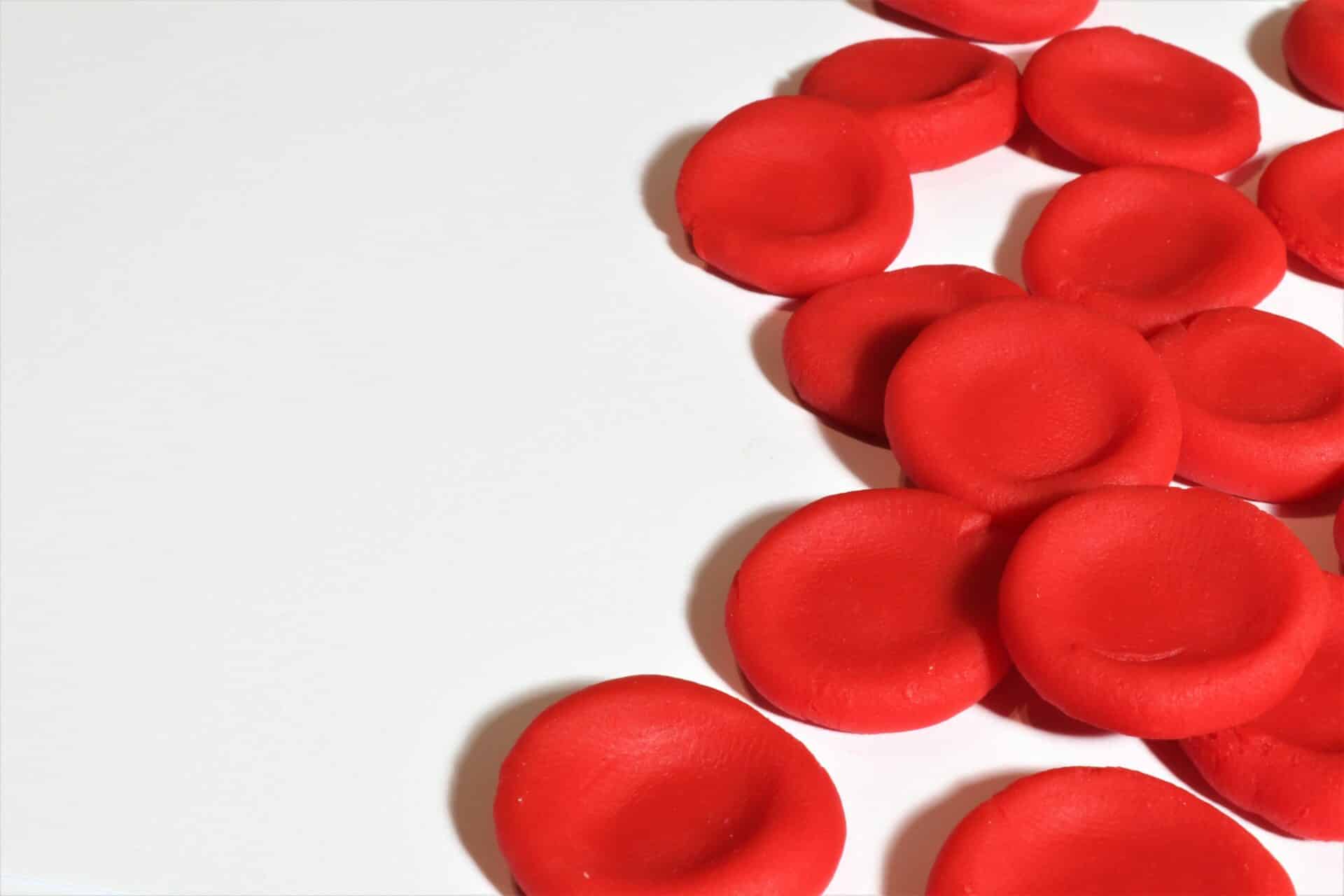Red blood cells are an essential part of the human body and are responsible for transporting oxygen throughout the body. When red blood cells are placed in distilled water, an interesting phenomenon occurs. The cells swell and start to burst due to a process called osmosis. Osmosis is the process where water moves from an area of lower solute concentration to an area of higher solute concentration. In this case, the water from the distilled water moves into the red blood cell because there is a higher concentration of solutes within it than outside. This causes the cell to swell and eventually burst, leading to its death.Red blood cells (also known as erythrocytes) are the most common type of blood cell and the vertebrate body’s principal means of delivering oxygen to the body tissues—via the blood flow through the circulatory system. They take up oxygen in the lungs or gills and release it while squeezing through the body’s capillaries. The cells are flexible and oval-shaped and contain hemoglobin, a protein that carries oxygen from the lungs to all parts of the body and also helps give red blood cells their characteristic color. Red blood cells live for about four months in the human body before they are replaced by new ones.
What Is Distilled Water?
Distilled water is water that has been purified through a process known as distillation. This involves boiling the water and collecting the steam, which is then cooled and condensed back into liquid form. The result is pure water with no contaminants, minerals, or chemicals. Distilled water has many advantages over regular tap water, making it a popular choice for drinking and cleaning. It can also be used in medical and laboratory settings because of its purity.
The process of distillation removes all types of impurities from the water, including bacteria, viruses, heavy metals, salts, and other contaminants. It also removes beneficial minerals such as calcium and magnesium that are found in natural sources of water. As a result, distilled water does not have any taste or odor and does not contain any minerals or nutrients.
Distilled water can be used for a variety of purposes including drinking, cooking, cleaning dishes, watering plants and filling aquariums. It can also be used as an ingredient in some products such as baby formula and certain medications. However, it should not be used to make coffee or tea because it lacks the necessary minerals to give these beverages their flavor.
Overall, distilled water is a popular choice for many people because it provides clean drinking water with no chemicals or impurities. It can also be used for various purposes around the home such as cleaning dishes or watering plants.
How Are Red Blood Cells Affected in Distilled Water?
Red blood cells are the most important components of the body’s circulatory system. They play a vital role in transporting oxygen from the lungs to the tissues and removing carbon dioxide from tissues to be exhaled. When red blood cells are placed into distilled water, they experience osmosis, which is the process of water moving through a semipermeable membrane. This causes them to swell and eventually burst due to the high concentration of water inside them compared to their surrounding environment. This can lead to anemia, a decrease in red blood cell count, and other health problems if not treated promptly. In addition, if left untreated, it could lead to death due to oxygen deprivation in other organs. Therefore, it is important to monitor any changes in red blood cell count after exposing them to distilled water.
If exposed repeatedly or for long periods of time, red blood cells may become damaged beyond repair and destroyed entirely by osmosis. To prevent this from occurring, it is important that distilled water be avoided when dealing with red blood cells and instead specialized solutions such as Ringer Lactate or saline should be used for experimentation or medical purposes involving these sensitive cells.
Size of Red Blood Cells
Red blood cells, also known as erythrocytes, are the most abundant type of cells in human blood. They are typically 7-8 micrometers in diameter, making them the smallest cell in the body. As such, red blood cells can pass through even the tiniest capillaries. Red blood cells have a biconcave shape, with a central depression on each side. This allows them to maximize their surface area for better gas exchange.
Composition of Red Blood Cells
Red blood cells contain hemoglobin, a protein composed of four chains of globin proteins and four heme groups. Hemoglobin is responsible for carrying oxygen from the lungs to other parts of the body and transporting carbon dioxide back to the lungs to be exhaled. The cytoplasm of red blood cells also contains numerous organelles and molecules necessary for cell function and metabolism. This includes ATP, enzymes, glucose transporters, and potassium ions.
Function of Red Blood Cells
Red blood cells play a vital role in human physiology by transporting oxygen throughout the body via hemoglobin. In addition to this main function, red blood cells also help maintain pH balance by releasing or absorbing hydrogen ions as needed during metabolic processes. They are also involved in immune response by recognizing foreign substances that enter the bloodstream and triggering an inflammatory reaction.
Life Span of Red Blood Cells
The average lifespan of a red blood cell is around 120 days before it is destroyed by macrophages in the spleen or liver. During its lifespan, it travels around 20 times through the entire circulatory system before being replaced by new red blood cells produced in bone marrow. The production and destruction process is tightly regulated to ensure adequate levels of red blood cells are maintained at all times.
Osmotic Pressure and Red Blood Cells
Osmotic pressure plays a key role in the functioning of red blood cells. Osmotic pressure is the force that drives water molecules in and out of cells, allowing for the transport of nutrients and waste products. Red blood cells are particularly affected by osmotic pressure, due to their need to maintain a balance between inside and outside environments.
When a red blood cell is placed in a solution with a different osmotic pressure than its own, it will swell or shrink in order to equalize the pressures. This process is known as osmosis, which is essential for maintaining homeostasis within red blood cells. If the outside solution has a higher osmotic pressure than the cell’s cytoplasm, then it will shrink due to water leaving its interior; if the outside solution has a lower osmotic pressure than the cell’s cytoplasm, then it will swell due to water entering its interior.
The ability of red blood cells to maintain their shape despite changes in osmotic pressure is due to their unique cell structure. Red blood cells have no nucleus or other organelles; instead they are composed of an outer plasma membrane wrapped around an inner layer of hemoglobin molecules. The hemoglobin molecules allow red blood cells to remain flexible despite changes in osmotic pressure, allowing them to expand or contract without rupturing.
In addition to maintaining homeostasis within red blood cells, osmosis also plays an important role in transporting oxygen throughout the body. When red blood cells enter capillaries that contain oxygen-rich solutions, they swell up due to higher osmotic pressure within the capillaries. This causes them to release oxygen molecules into surrounding tissues and organs, supplying them with much-needed oxygen.
Osmotic pressure and red blood cells have a strong relationship; without it, our bodies would not be able to function properly. Osmosis allows red blood cells to adjust their size depending on their environment while still maintaining their structural integrity, enabling them to transport oxygen throughout our bodies efficiently and effectively.

Osmosis
Osmosis is a biological process that involves the movement of water molecules from an area of high concentration to an area of lower concentration through a semi-permeable membrane. Osmosis works in both directions, with the flow dependent on the concentrations of dissolved substances on either side of the membrane. The process is essential for cells to maintain their homeostasis and balance of ions, proteins and other molecules. Osmosis can be used to purify and concentrate substances, as well as to exchange nutrients between cells.
Red Blood Cells
Red blood cells (RBCs) are an important component of blood, containing hemoglobin which binds oxygen and carries it to other tissues in the body. RBCs are also responsible for transporting carbon dioxide away from tissues and back to the lungs where it is exhaled. RBCs contain a semi-permeable membrane which makes them particularly well suited for osmosis. This allows them to regulate their volume by taking up or expelling water depending on the solute concentration inside or outside the cell. Osmosis helps RBCs maintain homeostasis by keeping their volume at a constant level despite changes in their environment.
Diffusion and Red Blood Cells in Distilled Water
Diffusion is the process by which molecules move from an area of higher concentration to an area of lower concentration. In the case of red blood cells, this process occurs when red blood cells move from a high concentration of water molecules to a low concentration of water molecules. This process is known as osmosis and is essential for the functioning of the human body.
When red blood cells are placed in distilled water, they will undergo osmosis and move towards the area with a lower concentration of water molecules. This will cause them to shrink as they lose their stored moisture, resulting in a decrease in their volume. Over time, if left in distilled water, the red blood cells will eventually become so small that they are unable to carry oxygen throughout the body, leading to health problems for the individual.
In order to prevent this from happening, it is important that red blood cells are not placed in distilled water for extended periods of time. If necessary, it is recommended that individuals use saltwater or other solutions with a higher concentration of solutes than distilled water. This will help to keep red blood cells healthy and ensure that they continue to perform their essential functions within the body.
Effects of Distilled Water on Red Blood Cells
Red blood cells are essential components of the human body. They are responsible for transporting oxygen throughout the body, and without them, the body would not be able to function properly. Therefore, it is important to understand how different substances can affect these cells in order to ensure their proper functioning. One such substance is distilled water, which is often used in medical practices and research settings.
Distilled water has been shown to have a number of positive effects on red blood cells. For example, studies have found that distilled water can help increase the number of red blood cells in circulation, as well as improve their shape and size. This improved shape and size can lead to improved oxygen delivery throughout the body, allowing for better overall health and performance. Additionally, distilled water has been shown to reduce oxidative stress in red blood cells, which can help protect them from damage caused by free radicals.
In addition to its positive effects on red blood cells, distilled water has also been found to be beneficial in other ways. For instance, it has been linked with increased hydration levels in the body, which can lead to increased energy levels and improved mental clarity. Furthermore, studies have shown that regular consumption of distilled water can reduce inflammation levels throughout the body and improve overall health outcomes.
Overall, distilled water appears to have several positive effects on red blood cells. It can help increase their number and improve their shape and size for better oxygen delivery throughout the body. Additionally, it can reduce oxidative stress in red blood cells and help keep them safe from free radical damage. Finally, it may also help promote better hydration levels in the body while reducing inflammation levels for improved overall health outcomes.

Conclusion
Red blood cells are normally surrounded by ionic solutions, such as those found in the human body. When placed in distilled water, red blood cells will become hypotonic and swell due to the lack of ions. This can cause them to burst, a process known as hemolysis. If the red blood cells can survive this osmotic shock, they will eventually become turgid and then shrink as water enters into their internal structure. In either case, these effects can be damaging to red blood cells and thus their survival time in distilled water is limited. Therefore, distilled water should not be used for any medical purposes involving red blood cells.
In conclusion, it is clear that when placed in distilled water, red blood cells undergo a number of changes that can ultimately lead to their destruction. As such, distilled water should never be used for any medical procedures that involve red blood cells.

